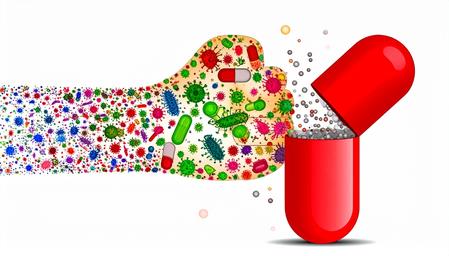Science
IIT Madras Develops Affordable Device to Detect Antibiotic Resistance

Researchers at the Indian Institute of Technology Madras (IIT Madras) have unveiled a groundbreaking microfluidic device that can swiftly determine bacterial resistance to antibiotics. This new technology, known as ‘ε-μD’, offers a cost-effective solution to Antimicrobial Susceptibility Testing (AST), a crucial process for identifying effective antibiotic treatments for infections.
The device enables healthcare providers to make informed decisions quickly, addressing the urgent need to combat antimicrobial resistance (AMR). The World Health Organization has identified AMR as one of the top ten global health threats, contributing to an estimated 4.95 million deaths worldwide in 2019 due to bacterial infections.
Innovative Design and Rapid Results
Unlike traditional AST methods, which can take between 48 to 72 hours and require extensive laboratory resources, the ε-μD device utilizes screen-printed carbon electrodes integrated into a simple microfluidic chip. This design allows it to deliver results in as little as three hours, making it suitable for smaller clinics and rural healthcare settings.
Prof. S Pushpavanam from the Department of Chemical Engineering at IIT Madras emphasized the potential impact of this device, particularly for patients in Intensive Care Units facing severe bacterial infections. “This will help doctors prescribe the right treatment and can be life-saving,” he stated.
The new device employs electrochemical signals to evaluate bacterial growth and antibiotic susceptibility. In a study published in Nature Scientific Reports, researchers tested the device’s effectiveness against two bacterial strains: gram-negative E. coli and gram-positive B. subtilis. By using antibiotics like ampicillin and tetracycline, researchers confirmed the device’s capability to detect various bacterial responses.
Clinical Potential and Future Applications
The device’s efficacy was further demonstrated through tests on urine samples spiked with E. coli, successfully identifying resistance to tetracycline. This highlights its potential for clinical diagnostics, particularly in resource-limited settings.
The development of ε-μD represents a significant step forward in the fight against AMR, offering a rapid, reliable, and economically viable method for determining antibiotic susceptibility. As AMR continues to pose a serious challenge to global health, innovations like this microfluidic device could play a crucial role in improving patient outcomes and reducing the misuse of antibiotics.
As healthcare systems around the world grapple with the implications of antimicrobial resistance, the insights provided by this research could lead to better treatment protocols and enhanced patient care, ultimately saving lives.
-

 Lifestyle3 months ago
Lifestyle3 months agoHumanism Camp Engages 250 Youths in Summer Fest 2025
-

 Sports3 months ago
Sports3 months agoDe Minaur Triumphs at Washington Open After Thrilling Comeback
-

 Business4 months ago
Business4 months agoKenvue Dismisses CEO Thibaut Mongon as Strategic Review Advances
-

 Sports4 months ago
Sports4 months agoTupou and Daugunu Join First Nations Squad for Lions Clash
-

 Top Stories4 months ago
Top Stories4 months agoColombian Senator Miguel Uribe Shows Signs of Recovery After Attack
-

 World4 months ago
World4 months agoASEAN Gears Up for Historic Joint Meeting of Foreign and Economic Ministers
-

 Business4 months ago
Business4 months agoOil Prices Surge Following New EU Sanctions on Russia
-

 Health3 months ago
Health3 months agoNew Study Challenges Assumptions About Aging and Inflammation
-

 Entertainment3 months ago
Entertainment3 months agoDetaşe-Sabah Violin Ensemble Captivates at Gabala Music Festival
-

 Entertainment3 months ago
Entertainment3 months agoBaku Metro Extends Hours for Justin Timberlake Concert
-

 Business4 months ago
Business4 months agoU.S. House Approves Stablecoin Bill, Sends to Trump for Signature
-

 Top Stories4 months ago
Top Stories4 months agoRethinking Singapore’s F&B Regulations Amid Business Closures









